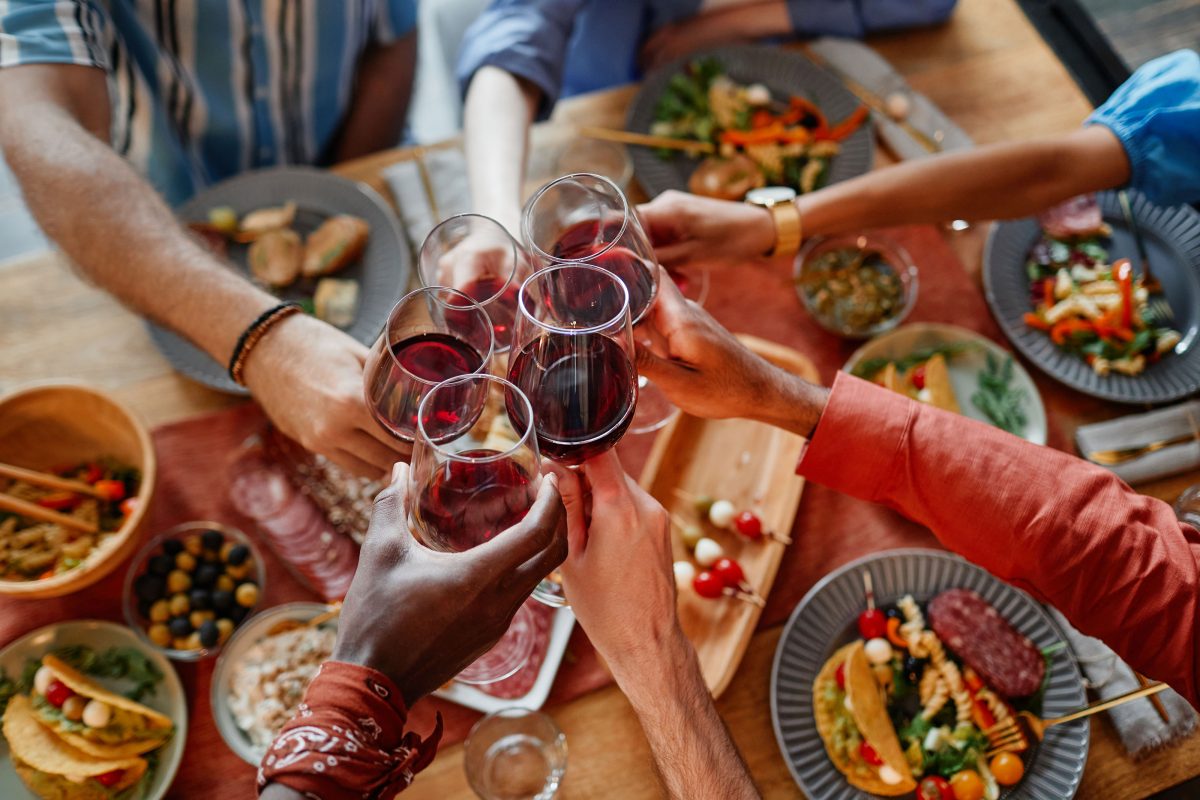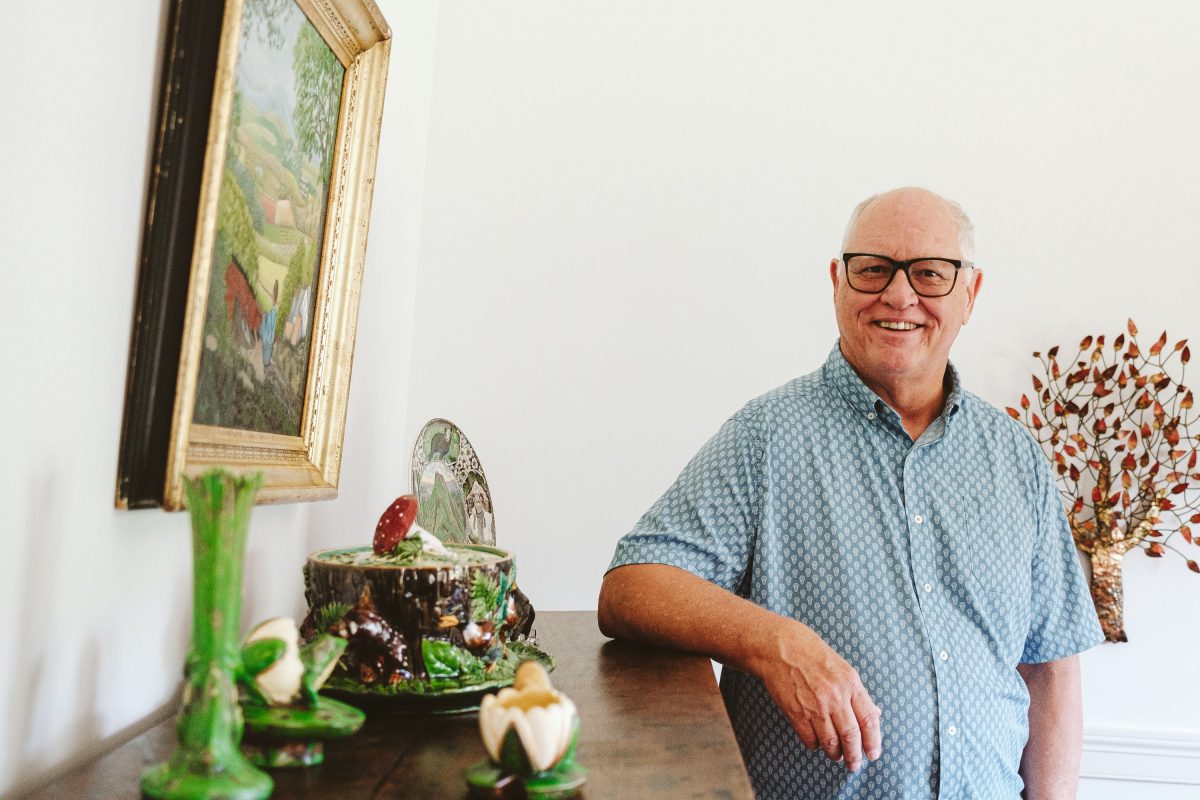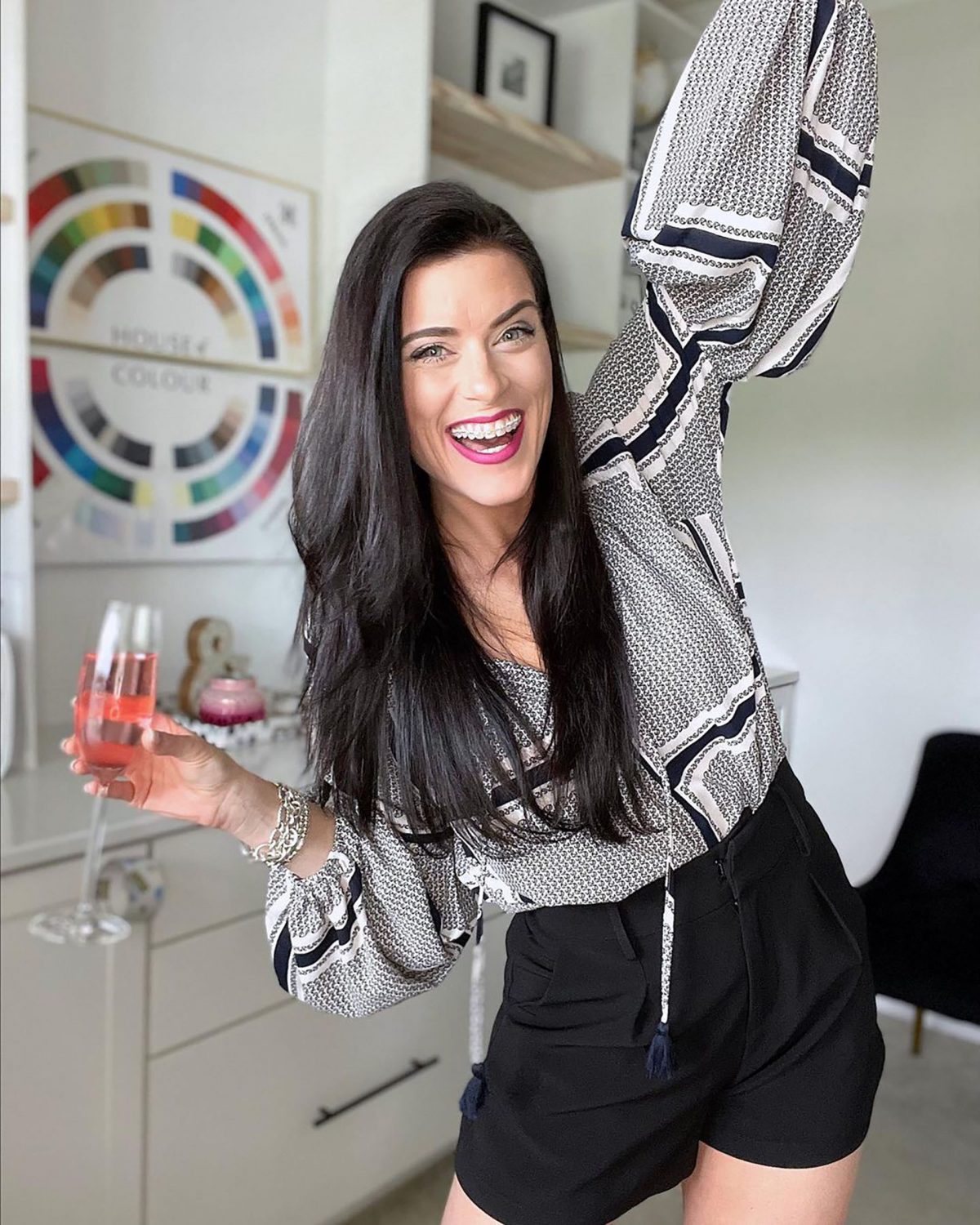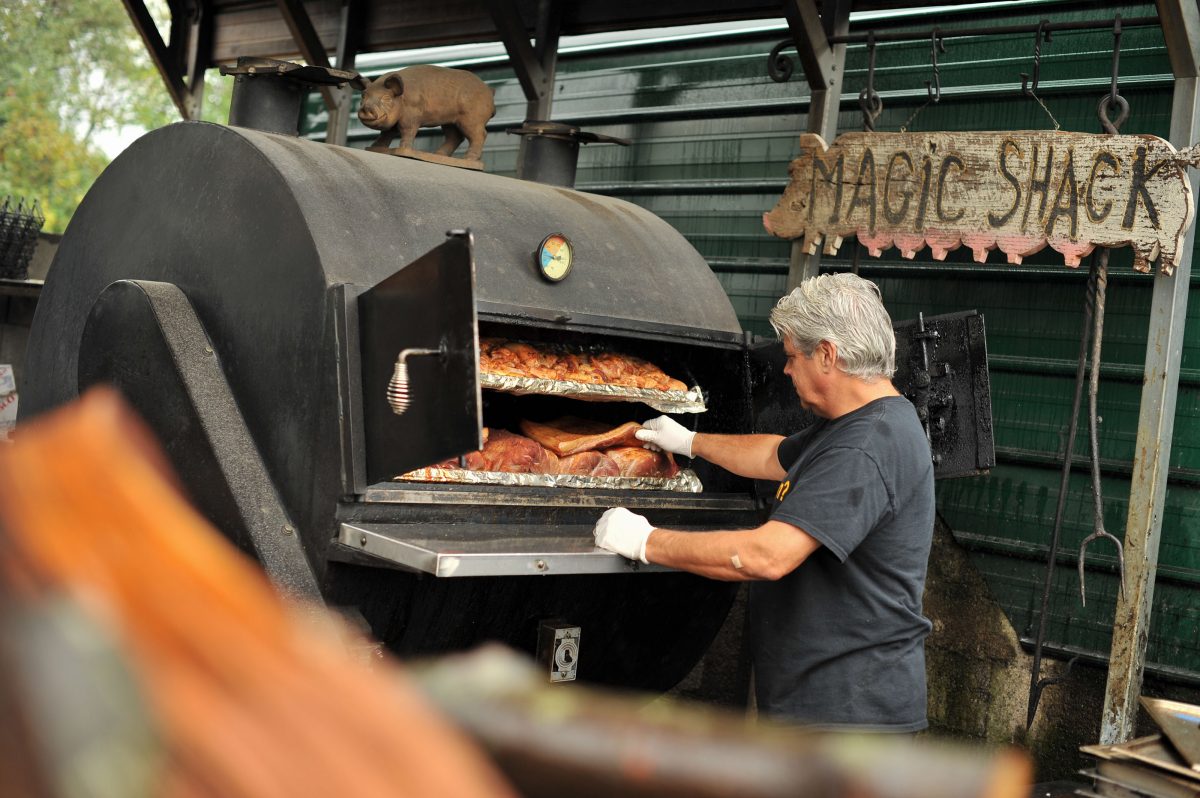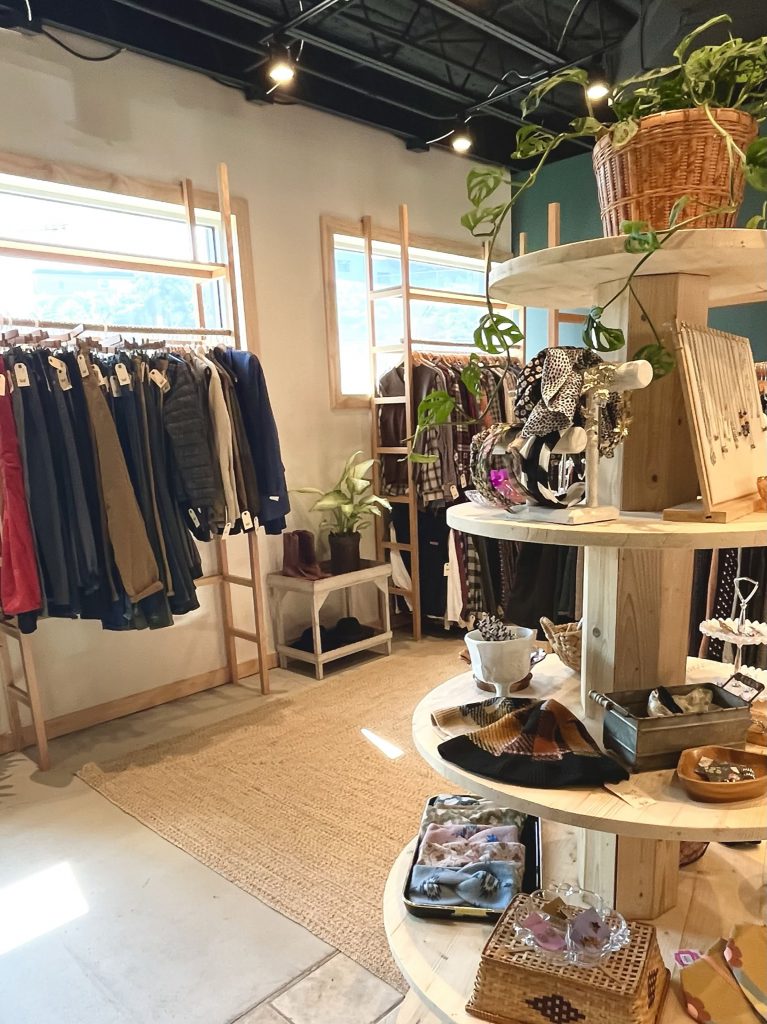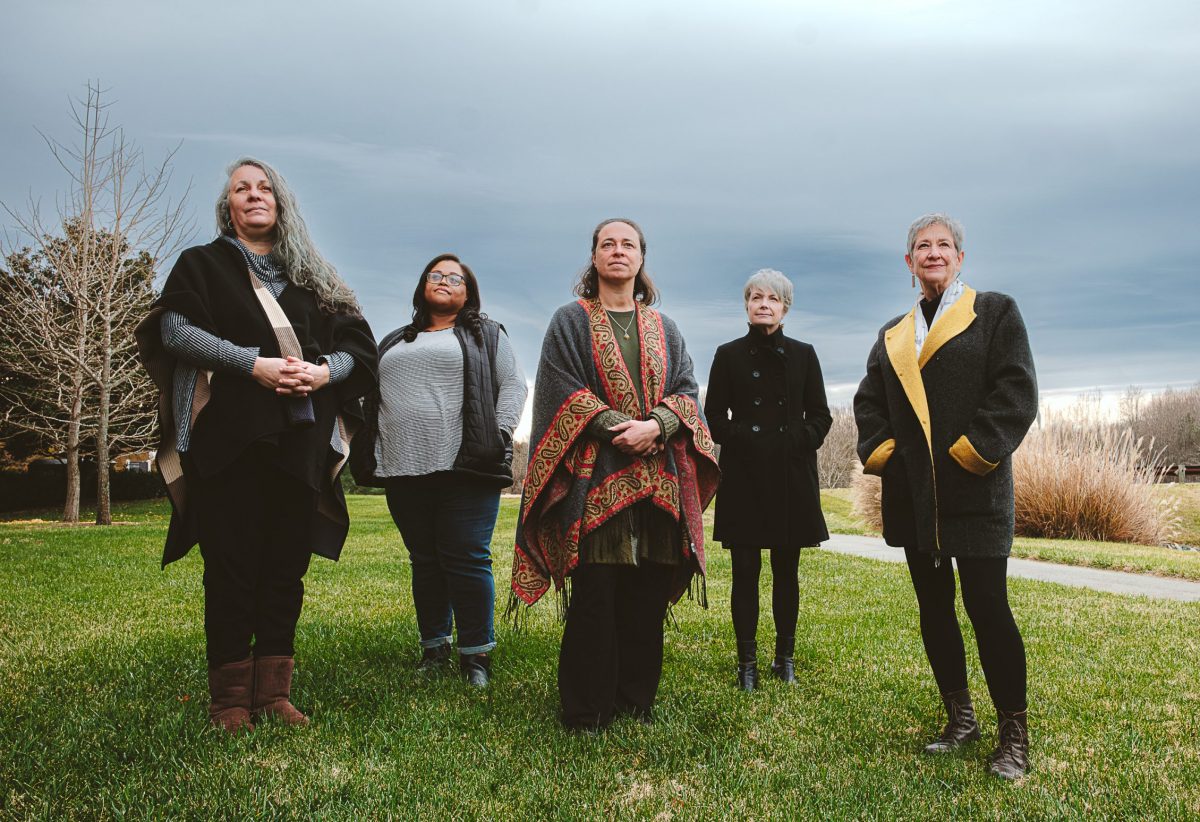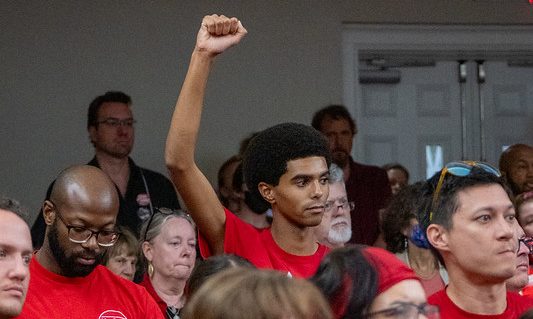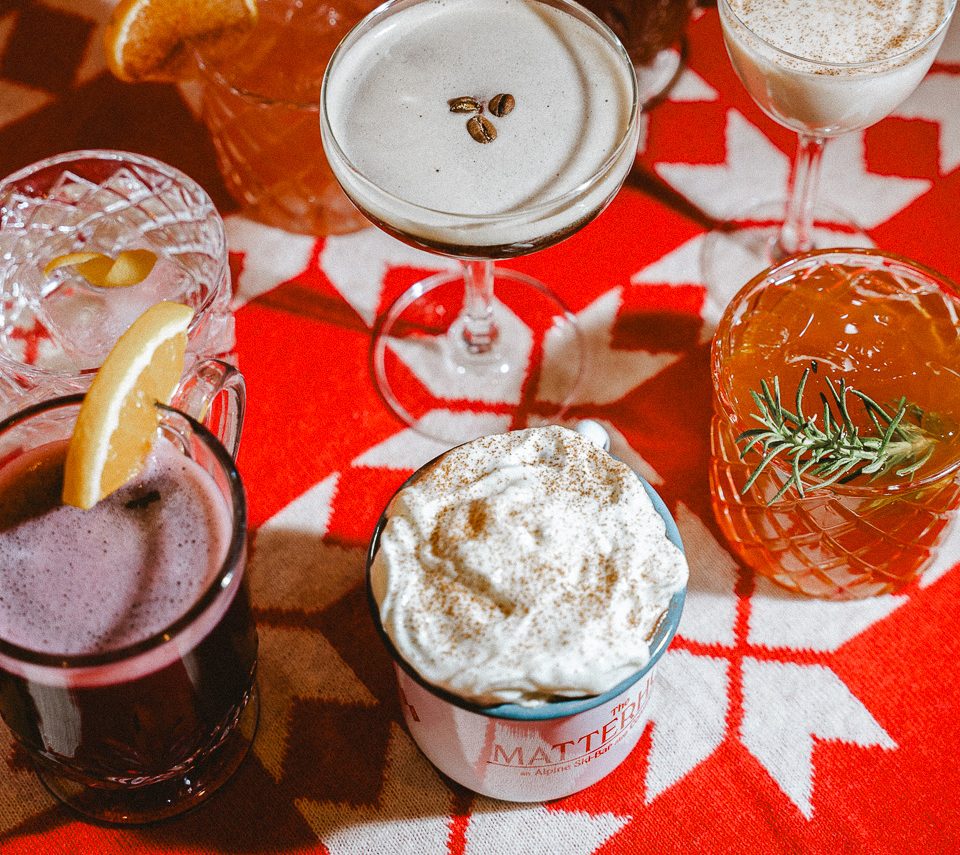Say you’ve just moved into a new house. Or the seasons changed. Or it’s your birthday. There are endless reasons to host a gathering, but where do you begin? We’ve asked a few local experts—from home hosts to the pros—how to pull off a low-fuss get-together. It starts with an idea, then throw in some wine, some tunes, and you’ve got yourself a kiki. Let’s party!

THE SIMPLE WAY TO SOIRÉE
Edward Warwick-White has been helping host parties for as long as he can remember (“Even Christmas felt like a big party where friends and neighbors could drop by at any time,” he says of his family holidays growing up). He’s lent a hand to local wedding and event planners, and is often tapped by friends and family to arrange charcuterie boards or help flesh out a theme for parties at home. And in his position as assistant dean of the full-time MBA program and student affairs at UVA’s Darden School of Business, he’s overseen everything from Proud to be Out Week to planning graduation for the McIntire School of Commerce and opening week for Darden.
We knew he’d have thoughts on everything from the food to the décor, and asked him to share his opinions on each, but his greatest tip is this: “At the end of the day, you do you,” he says. “Inspiration is great, but do what feels natural and comfortable for you. Your guests will love it.”—CH
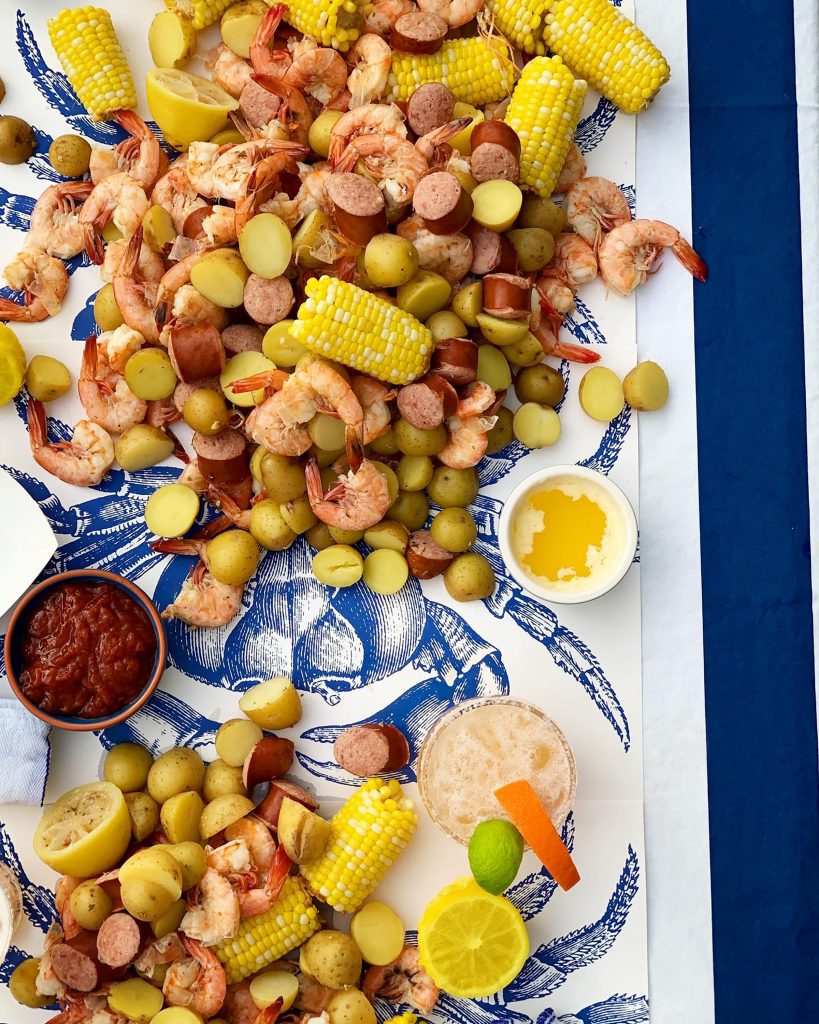
THE FOOD
If it’s a cocktail party, it’s all about the apps. If it’s a multi-course dinner party, be careful to not overload your guests on pre-dinner apps and snacks. I like to focus on having three or four substantial apps as opposed to a smattering of 15. My go-tos are a meat (ex: chicken satay skewers), a veg (ex: crudité/grilled veggies and hummus), a sea (ex: shrimp, oysters), and a cheese board situation. I’d rather replenish than be continually cycling through different dishes. Don’t forget to include some gluten-free options.
I’m obviously a big fan of a cheese/charcuterie board, and I like to make one whenever possible—they’re communal, they offer a lot of variety in a contained way, and they can be a centerpiece/conversation starter on their own. I love that guests can try different combinations of things without fully committing—ooh, a little goat cheese with some fig jam and a praline pecan? Don’t mind if I do! Ooh, a little manchego with some hot honey and speck? Naughty little treat! It’s like speed dating, but with cheese. Be sure to include both hard and soft cheeses, and at a minimum, cut the cheese (lol) for your guests to start. Much like a cake, no one wants to be the first person to cut into a big wedge.
Ina Garten was right: Store-bought is fine.
I love to cook, but I don’t believe we have to do it all. Make two things, buy three things. We are fortunate to be surrounded by so many incredible food options here in Charlottesville, so we should take full advantage. Whether it’s snagging a flourless chocolate cake from MarieBette for dessert (finish off with some fresh berries and cream), an antipasto platter from Mona Lisa, or an abundance board from Plenty Cville, you can really treat your guests without spending the whole night in the kitchen.
The drinks
My handsome husband got very into craft cocktails during the pandemic, but the goal is not for him to be bartending all night. When we host, he’s started making drink menus based on what’s being served, who is coming, and what’s available. By having a narrow cocktail list, he can maximize ingredients and time. You can offer a variety (a few shaken, a few stirred, and a signature) without having to take orders for piña coladas and vodka stingers. If you don’t have a mixologist husband, storebought is fine. But no, seriously. Consider a batch cocktail like an Aperol spritz in a big carafe. Guests can pour over ice and garnish with an orange wheel. I’m not a wine expert, so I always let my friend Mariko bring/pick the wine. Don’t be afraid to say, “This is what we will have, but if you want something else, feel free to bring it!” Most guests want to bring something—make it something you can use.
Here’s the thing: Your guests want to have a good time.
They don’t want to feel like you stayed up all night getting everything ready. Instead of trying to impress, focus your energy on making everyone feel at home. It doesn’t have to be fancy or fussy to be nice. Reclaim the keg party! Order a variety of favorite pizzas from local pizza joints paired with a pony keg of craft beer or cider and your best jam band playlist. Guests care about good food, good company, and a good time—not about salami shaped like roses and napkins folded into swans.

The entertainment
Having an activity can be fun, but it can also wreck a vibe faster than your ex showing up drunk and uninvited. If you’re planning an activity, read the room/assess the vibe as the night goes on. If everyone is having a great time talking and catching up, maybe you don’t need to stop the train for charades and card games. If the goal is for guests to get to know one another, consider something easy like some fun/funny question prompts on the table, but don’t make it weird. I went to a party solo once where all of the husbands had to sit at one table, while all of the wives had to sit at another table. If you know me, I would have rather been at the other table with the few wives I knew. I also went to a party where the hostess made us continually rotate seats every 30 minutes, and it eventually just got old. Your guests are coming to have a good time, not to be in a social experiment.
The tunes
Music is a fast and easy way to create a vibe. Obviously music can serve a theme (Roaring ’20s, Beach Boys, Christmas, bluegrass…) but I also like to approach music seasonally. Summer to me feels vintage breezy like Billie Holiday or Ella Fitzgerald, fall feels cozy like Fleet Foxes or Django Reinhardt. Don’t ignore the volume—is it background music? Or are you trying to start a dance party?
The look
Décor should be simple, pretty, and true to who you are. If you have a theme, feel free to embrace it without breaking the bank. I once co-hosted a baby shower with an Alice in Wonderland/Mad Hatter tea party theme. We decorated with scattered playing cards, mismatched tea cups, saucers, and swapped out flower vases for arrangements in tea pots, and even some edible décor—cookies that said Eat Me from a local bakery. If you don’t have a theme, don’t underestimate the power of fresh flowers, votives, lighting, and some personal touches. Keep floral arrangements low for conversation, adjust the lights as the night goes on, and don’t overdo it. Even if your table is magazine-worthy, it’s no fun if you your guests can’t figure out where to set down their glass.
Word to the wise: Don’t let a theme ruin your party.
Theme parties can be fun, but they can also be stressful and cumbersome for your guests. If you’re going with a theme, make sure it serves the purpose of the event—generating excitement, not creating a barrier for entry. Remember that not everyone has a flapper dress or a leisure suit in the closet. The goal is to not create a bunch of work for your guests before they even get in the door. Keep it fun. One of my favorite summertime party themes is “Camp Warwick White”—hot dogs, burgers, nugs, s’mores bar, a batch cocktail (“bug juice”), and some lawn games. Guests can wear T-shirts, shorts, and tanks. Who doesn’t love adult summer camp?!
The practicals
Be organized. One of my favorite tips for a cocktail party is to arrange all of the serving dishes on the table and label each one with a post-it of what will go on it. That way, you aren’t digging for dishes at party time. If guests arrive early, put them to work—chiffonade that basil while you enjoy that free booze, my friend! Make/purchase food that can stay warm or be easily replenished. Consider a buffet or family-style so you aren’t in the kitchen plating every course, and clean as you go, if you can. If you have enough glasses and plates from cocktail hour, go ahead and run the dishwasher so you aren’t overwhelmed with dishes after dinner. And if you’re going to be in the kitchen cooking/prepping, be prepared for most of your guests to gather in the kitchen, too.
A word on dishes: Rent!
I’m not talking the musical or the Charlottesville housing market—I’m a big fan of rentals for a party. Whether it’s linens, glassware, or a cotton candy machine, renting is a great way to save time and shake things up without the lifelong commitment of buying. For Thanksgiving, I like to rent almost everything but the food and family. Not only can you pick out fancy pheasant plates and funky amber goblets that you’d only use once a year, you can avoid the mountain of dishes at the end of the night when you’re completely over it all. Just scrape your dirties and drop them in a milk crate for return. Renting glassware for your next cocktail party is a great way to avoid both emptying your cabinets or resorting to red solo cups. Keep it fun and fresh by mixing in some of your own favorite pieces.
THE PERFECT PLAYLIST
If you’re throwing a party, you’ll need a list of tunes created with a good time in mind. We asked WNRN’s Jeff Sweatman to get the party started, and he delivered with a 33-song (“in part as a salute to the 33 1/3 LP,” he says) list, plus a few notes for true music nerds. You’ll likely recognize a few names on the list.
“I wanted to represent at least some of the amazing music being made right now across the Commonwealth (Deau Eyes, Free Union, Kate Bollinger, Kendall Street Company, Boxed Lunch, Dogwood Tales),” he says, “and C’ville legends of yore, too (Love Canon, Pavement, Tommy Boyce).”
Give it a listen.—CH
Track 1: Sets template/vibe I was going for, plus the band is called Dinner Party!
Tracks 11 and 33: U2 and Bob Dylan are reinterpreting past works to (mostly) great effect.
Track 12: Brittany Davis is blind, non-binary, and in the supergroup Painted Shield with Stone Gossard of Pearl Jam.
Track 13: The original lineup of Fishbone is back!
Tracks 15, 21, and 25: Everyone who knows about SAULT and Danielle Ponder and Joy Oladokun is better for it.
Track 22: De La Soul is finally on streaming services!
Track 28: This came out in early 2021 so it’s a funny pandemic juxtaposition of scenarios (meeting God/The Devil/being sentenced to death) and food (gorditas, quesadillas, chicharrón—not necessarily in that order)
Track 29: Whether it’s SNL, covering Bo Burnham, or creating a new supergroup, Phoebe Bridgers has the Midas touch lately. Her version of Sir Paul’s song coulda been a big hit in a less jam-packed release environment.
GOOD FOR THE GATHER
Making people feel seen is artist Britt Davis’ superpower. She does it through her paintings—which often feature encouraging titles and hidden messages—as well as through events at her home. A co-host of TONIC + bloom, a seasonal women’s retreat, Davis says it’s important to help guests feel at home and relaxed.
“I like to do simple things like run around with no shoes on, or have my kids greet people in the driveway,” she says. “This helps people know our home is a place where they can come as they are.”
Davis is a strong believer that if you don’t have a specific reason to gather, it’s fine (and fun!) to make one up. We asked her for a list of her greatest hits—plus a few tips and tricks she’s learned over the years.—CH
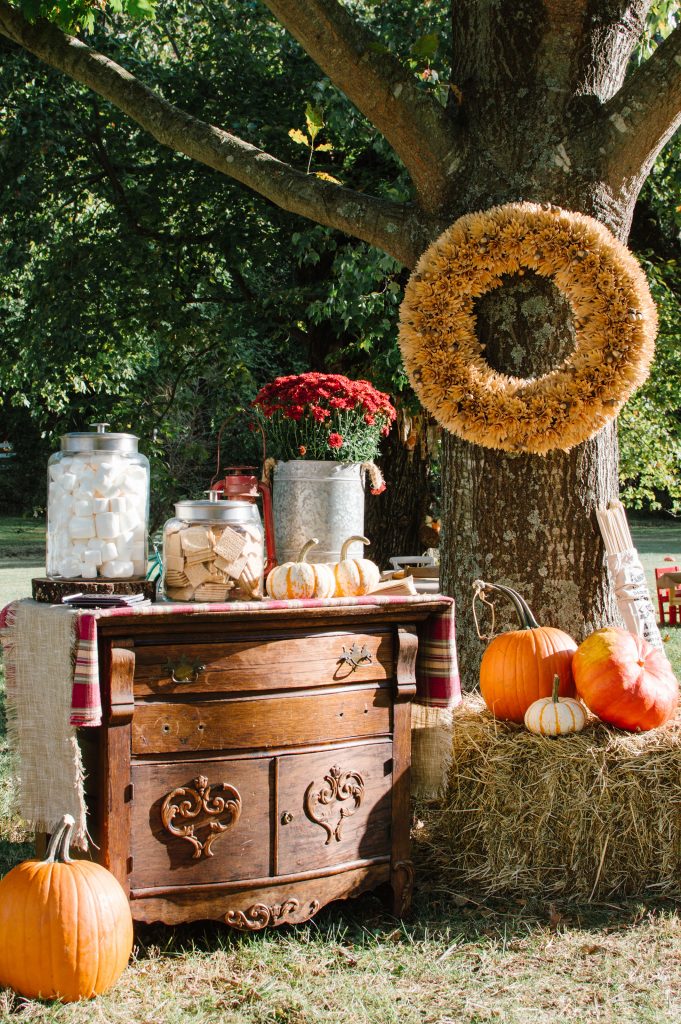
Seasons of love
Every fall, the Davis’ host 300 people at their Greenwood farm to celebrate the turn of the season. They hire a band, have crafts for the kids, and roast s’mores. “We always have Brownsville fried chicken and drinks and every family brings a side dish to share,” Davis says. “It’s turned into one of my kids favorite days of the year, with tons of kids running around the farm covered in marshmallow stickiness.” (For the adults, Davis recommends this spiked cider recipe: Mix 2 oz. of Captain Morgan’s spiced rum to 4 oz. of warm apple cider. Add a cinnamon stick and serve.)
For the ladies
Davis loves helping facilitate new friendships, so she hosts a casual playdate party for new-in-town moms. It can be as simple as putting out a pitcher of water and a bowl of fresh strawberries. “I love seeing info being exchanged,” Davis says. “Meeting families who are in the same stage of life as you, when you are new to an area, can help you feel so hopeful and at ease.”
Solemn vows
A suicide loss survivor, Davis hosts an annual event called Ladies Summer Survival Toast during suicide prevention week. Guests wear white and write short love letters to themselves on a luminary that gets floated in the pool. “This event started seven years ago when I lost my best friend to a silent battle of postpartum depression,” Davis says. “I did the first toast to thank the friends that truly helped me survive the summer that she passed. It’s beautiful to see how the event has evolved over the years.”
Country strong
For her daughter’s 5th birthday, Davis nabbed straw hats the Dollar Store, bought a 12-pack of mason jars and had all the guests arrange flowers. “It was sweet, simple, gave them an activity to do, which was also their favor to take home,” she says. Two years later, for her daughter’s 7th birthday, the girls painted wooden bird houses.
Simple is good
“For my first child’s 1st birthday party, I had my husband and father moving furniture into a UVA garden. I hired a photographer. All of the decor was DIY perfection,” she says. “By baby number three I realized that the first birthday party was for me surviving that challenging first year.” She wised up: For her third child’s 1st birthday, she asked friends to meet her at King Family Vineyards with a side dish. “We had a fabulous time drinking wine and snuggling my 1-year-old on a picnic blanket.”
EASY SERVE
When it comes to wine, you don’t need to be an expert to offer something that’ll have your guests’ mouths watering. We asked Reggie Leonard, co-founder of Blenheim Vineyards’ inclusive wine club Oenoverse, to help us out with a list of Virginia bottles that’ll please all palettes (and budgets).
Rosé
Still: Blenheim 2022 Rosé
Sparkling: Rosemont Extra Brut
Sparkling Rosé
Treat yourself: King Family Vineyards
2021 Mountain Plains Rosé (100 percent petit verdot + one year of age)
White
Lighter-bodied: Eastwood Farm and Winery Petit Manseng; Early Mountain Vineyards 2021 Five Forks
Medium/full-bodied: Common Wealth Crush “The Artist Formerly Known As Sparkling”; Fifty-Third Winery 2022 Chardonel
Sparkling: Veritas Scintilla, Gabriele Rausse Chasselas Doré 2022 Sparkling
Treat yourself: Midland 2018 Blanc
de Blancs Zero
Red
Lighter-bodied: Early Mountain
2022 Young Wine Red
Medium/full-bodied: Afton Mountain Bacco ’19
Sparkling: Bluestone Vineyard 2022
Half Bubble Off-Center
Treat yourself: Ankida Ridge 2021
Pinot Noir
PRO TIP
Anyvent owner Jazmin Portnow is known for creating beautiful, one-of-a-kind wedding experiences for clients. We figure, anyone who knows how to pull off an event like that surely has some tips for home hosts. We tapped her expertise for a few tricks when it comes to creating a memorable event at home.
Tip 1: Details, details, details: Focus on creating an experience for your guests for events both big and small. Sure, people don’t typically notice that anything is “missing,” but they will potentially talk about small details and how they felt throughout your gathering for years to come. For instance, I didn’t realize how much people noticed this until my mother-in-law commented on how lovely our dining room table always looked—all due to the magic of a few Crate & Barrel vases and Trader Joe’s centerpieces created right in my kitchen. You can bring out the good china and flatware for special gatherings, but places like Amazon and Etsy have a lot of high-end disposable options that look fancy, won’t break the bank, and will elevate any gathering.
Tip 2: Let food be their guide. Food is the focal point at most events, so be sure to place it in an area that you’d like guests to gather in. If your food is too far away from the action and pulls people away from the party, it has the power to bring down the vibe or take your guest’s attention away from the festivities. And, word to the wise: Create a fun menu that allows you to prep things ahead of time. It’s great to spoil your guests and showcase your talents in the kitchen when you host, but try to avoid being so tied up in the kitchen that you don’t have time to enjoy quality time with your guests.
Tip 3: Don’t forget drink tags. Ever put your drink down at a party and forget which one was yours? It happens all of the time and leads to a lot of waste. Avoid waste and look like a details rock star by providing guests with wine or cup charms that differentiate one glass from another.
